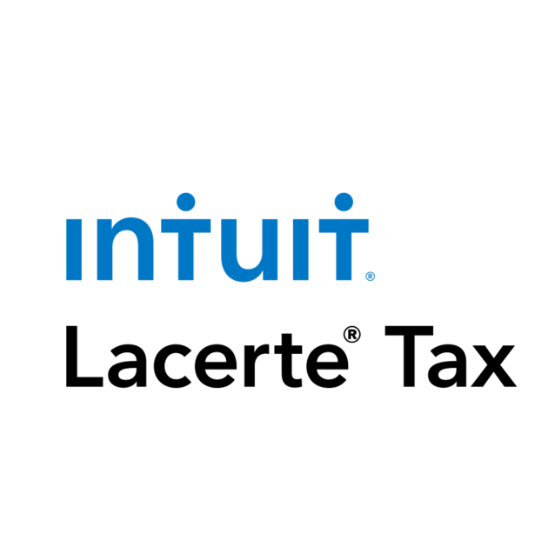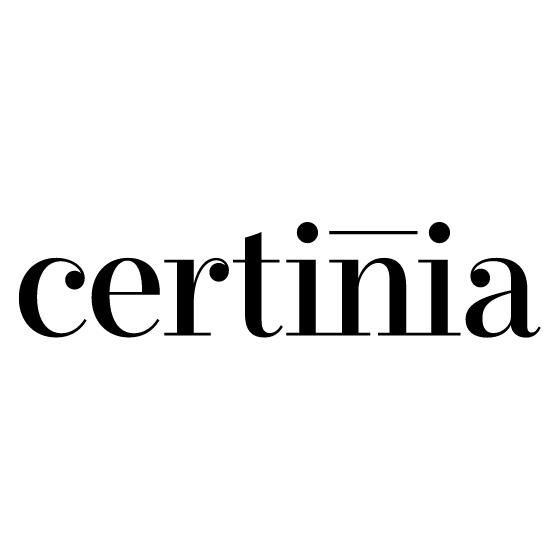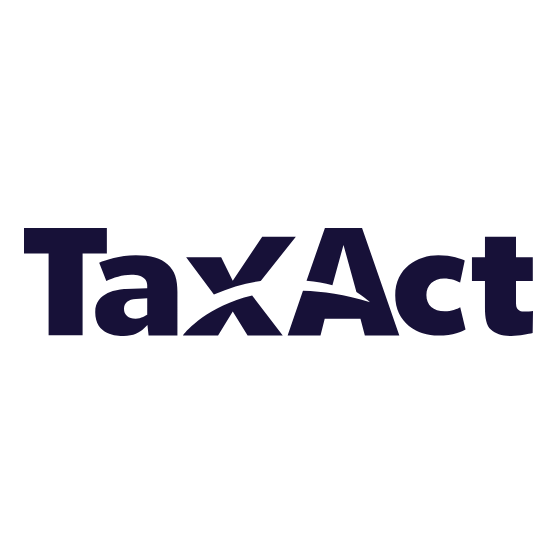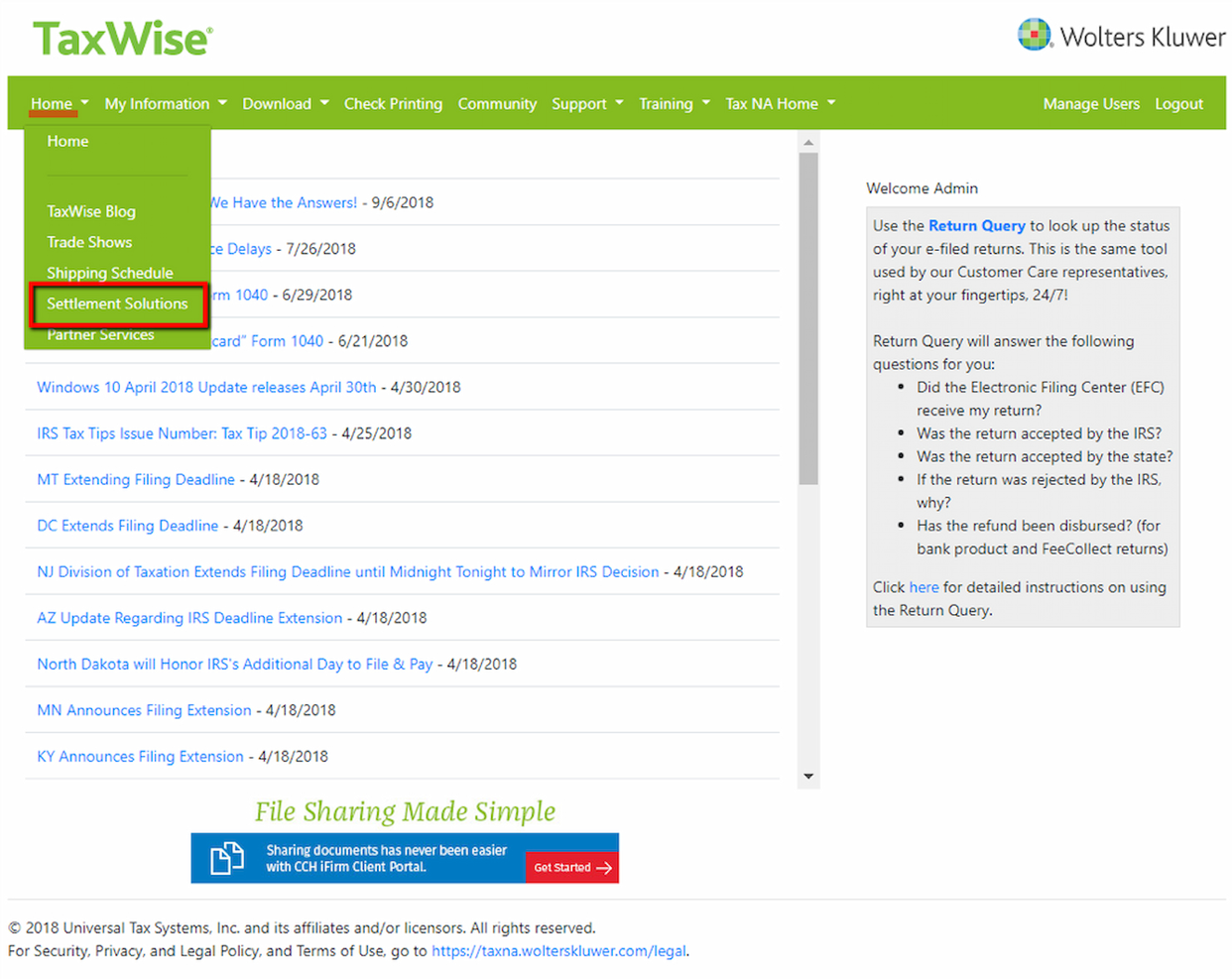Best Tax Software Shortlist
Here's my pick of the 10 best software from the 20 tools reviewed.
Our one-on-one guidance will help you find the perfect fit.
Tax software automates the process of preparing a tax return by using a step-by-step guide to ensure all relevant information is collected and the correct tax forms are filled out. However, finding the right solution for you can be challenging. After reviewing and assessing dozens of solutions, here are the results.
Why Trust Our Software Reviews
We’ve been testing and reviewing tax software since 2023. As financial operators ourselves, we know how critical and difficult it is to make the right decision when selecting software.
We invest in deep research to help our audience make better software purchasing decisions. We’ve tested more than 2,000 tools for different finance use cases and written over 1,000 comprehensive software reviews. Learn how we stay transparent & our tax software review methodology.
Best Tax Software Summary
| Tools | Price | |
|---|---|---|
| Xero | From $15/month (billed annually) | Website |
| Lacerte Tax | From $479/year (billed annually) for the Lacerte REP (Fast Path only) plan | Website |
| TurboTax Business | From $99/filing | Website |
| Drake Tax | From $349.99/month | Website |
| Certinia | Pricing upon request | Website |
| TaxAct Business | From $139/month | Website |
| Bloomberg Tax | Pricing upon request | Website |
| Cash App Taxes | Free to use | Website |
| TaxWise Online | From $1,565/year | Website |
| Trolley | From $49/month | Website |

Compare Software Specs Side by Side
Use our comparison chart to review and evaluate software specs side-by-side.
Compare SoftwareHow To Choose Tax Software
As you work through your own unique software selection process, keep the following points in mind:
- User-Friendliness: Tax software should simplify the tax preparation process, not complicate it. Look for a solution that offers an intuitive interface and step-by-step guidance.
- Comprehensive Features: Always ensure the software meets all your filing needs. The software should cover various tax situations, from simple to complex, to avoid the need for additional tools or services.
- Accuracy and Compliance: The software you select must be up-to-date with the latest tax laws to ensure compliance and accuracy. This is crucial for businesses that operate in multiple states or countries, where tax regulations can vary significantly.
- Security: Make sure to choose a software with steadfast security measures, such as encryption and multi-factor authentication. This consideration is especially important for accountants handling client data, as a breach could have severe professional and legal repercussions.
- Support and Resources: Easy access to customer support and tax resources can be a lifeline during tax season. Whether you're a first-time user or a seasoned tax filer, having expert assistance available can help resolve issues quickly.
Best Tax Software Reviews
Check out my in-depth evaluations and summaries of the top tax software. Each review will guide you through the advantages, drawbacks, functionalities, and ideal scenarios for use.
Xero is a cloud-based accounting software designed primarily for small to medium-sized businesses, aimed at simplifying bookkeeping and financial management.
Why I picked Xero: Xero offers real-time data synchronization, which ensures that financial information is always up-to-date and accurate. This feature is particularly beneficial for businesses operating in multiple tax jurisdictions, as it reduces compliance risks by automatically updating tax rates and regulations. Additionally, Xero's automation capabilities allow for the automatic generation of tax reports and reminders for deadlines, minimizing manual input and reducing the likelihood of errors.
Standout features & integrations:
Features include online invoices, bank connections, claim expenses, bank reconciliation, payroll, multi-currency accounting, contact management, sales tax calculation, and an accounting dashboard for a comprehensive view of finances, including bank balances and outstanding invoices.
Integrations include Hubdoc, Stripe, Xero Practice Manager, Shopify integration by Xero, HubSpot CRM integration, Xero Analytics Plus, Xero Inventory Plus, Xero Workpapers, Spendesk, and Dext.
Pros and cons
Pros:
- Cloud-based accessibility
- Good reporting features
- User-friendly interface
Cons:
- Mobile app is not as robust as desktop version
- May not be suitable for large enterprises
Lacerte Tax simplifies the handling of complex tax scenarios for professionals. It’s best for complex tax scenarios because it provides a detailed form library, sophisticated calculations, and extensive diagnostics, ensuring accuracy and compliance for challenging tax cases.
Why I picked Lacerte Tax: Lacerte Tax’s extensive form coverage and precise diagnostics differentiate it from other tax software, making it highly effective for intricate tax work. It boasts fast processing speeds, detailed form coverage, and sophisticated diagnostics that identify potential errors and omissions, ensuring accuracy and compliance.
I judge Lacerte Tax to be best for complex tax scenarios because of its thorough error-checking mechanisms and support for multiple users, which is crucial for firms dealing with a high volume of complex tax filings.
Standout features & integrations:
Features include an intuitive interface detailed diagnostics, swift data entry, extensive form and schedule support, direct integration with QuickBooks, e-file capabilities across multiple states, batch processing, advanced error checking, customized client letters, a comprehensive tax planner, and robust support for complex tax scenarios such as multi-state returns and specialty forms.
Integrations include Microsoft Excel, Microsoft Outlook, QuickBooks Desktop (including versions like Enterprise, Premier, and Pro), Adobe Acrobat (Pro, Standard, and Reader), and other tools.
Pros and cons
Pros:
- Integrates with QuickBooks and other key software
- Over 25,000 diagnostic checks to spot errors
- Extensive form library with over 5,700 forms
Cons:
- Lack of flexibility and customization
- Higher cost relative to some other tax software
TurboTax Business simplifies the tax filing process for small businesses with expert guidance. It’s best for providing step-by-step assistance throughout the tax filing journey.
Why I picked TurboTax Business: TurboTax Business’ support system and intuitive design are ideal for small business owners. Its standout feature is the personalized guidance and expert assistance it provides, which is why I judge it to be best for guided business tax filing. This tool ensures that users can navigate their tax filing with confidence and precision.
Standout features & integrations:
Features include step-by-step guidance for tax preparation, automatic error checks, e-filing capabilities, support for multiple business structures like LLCs, S-Corps, and partnerships, deductions maximization for industry-specific expenses, creation of W-2 and 1099 forms, direct import of financial data from QuickBooks, interactive tax advice from experts, audit support, and a user-friendly interface.
Integrations include QuickBooks, Koinly, Square Appointments, NeatFiles, Square for Retail, Neatbooks, Square Payments, TurboTax, and more.
Pros and cons
Pros:
- User-friendly interface for easy tax filing
- Audit Defense included without extra charge
- Access to tax experts for personalized guidance
Cons:
- May not cater to all types of business entities or complex tax situations
- Additional fees for state filing and other services
Drake Tax is a professional tax software best for tax professionals who require a robust solution for handling various tax scenarios.
Why I picked Drake Tax: Drake Tax offers robust tools for fast data entry, thorough error-checking mechanisms, and a broad array of forms and schedules, ensuring compliance and accuracy in filings. It’s known for its exceptional support services, providing users with access to knowledgeable customer service representatives and extensive educational resources.
I believe Drake Tax is best for comprehensive tax preparers because it offers a complete, all-in-one solution that supports full-service tax businesses, from individual tax returns to complex corporate filings.
Standout features & integrations:
Features include automatic data flow between related forms, comprehensive error-checking, support for all states with income tax, electronic filing for federal and state returns, multi-state return capability, quick data entry tools, integrated tax planner, extensive reporting options, direct import from QuickBooks, and robust client management tools.
Integrations include Drake Accounting, Drake Portals (SecureFilePro), Drake Pay, GruntWorx Tax Automation, TheTaxBook WebLibrary Plus, Audit Assistance and ID Theft Restoration, SmartVault, TaxDome, Verito Technologies, Sagenext, Cloudwalks, LukkaTax, and more.
Pros and cons
Pros:
- Offers secure file exchange and payment option solutions
- Available on both desktop and cloud platforms
- Manages all types of tax returns
Cons:
- Outdated and less user-friendly interface
- Cloud hosting requires an additional monthly fee
Certinia is a cloud ERP and PSA software that streamlines and automates business operations. It’s designed to improve cash flow, project profitability, and employee utilization.
It stands out as the best for Salesforce ERP integration because it is built on the Salesforce platform, offering a unified approach to managing business operations. This integration allows for real-time collaboration across various business functions, leveraging Salesforce's robust analytics and customer insights.
Why I picked Certinia: Certinia’s deep integration with Salesforce provides a seamless experience for managing enterprise resources and professional services. Its native Salesforce environment means that users can enjoy a consistent user experience and access industry-leading analytics.
I believe Certinia is best for Salesforce ERP integration due to its ability to connect all aspects of service operations, from estimation and delivery to financial planning and accounting, all within the Salesforce ecosystem.
Standout features & integrations:
Features include Services CPQ for competitive and profitable estimates, Services Automation to improve project profitability, and Resource Management for optimizing the deployment of personnel. Additionally, it offers Services Billing to handle complex billing issues and Revenue Management to centralize revenue streams and ensure compliance with standards like ASC 606 and IFRS 15.
Integrations include Salesforce, AccessPay, ADP, Asperato, ChikPea, B2BGateway, CompleteEDI, SAP Concur, Conga, Docusign, Expensify, and more.
Pros and cons
Pros:
- Focus on improving cash flow, project profitability, and employee utilization
- Comprehensive feature set for managing all aspects of service operations
- Deep integration with Salesforce for a unified business management experience
Cons:
- Limited customization options for specific business processes and reporting needs
- Requires a minimum number of users, which may not be suitable for very small businesses
TaxAct Business is a tax software designed for self-preparation of business taxes. It’s best for DIY business tax preparation due to its user-friendly interface and comprehensive features.
Why I picked TaxAct Business: TaxAct offers a straightforward approach to business tax filing, which is ideal for those who prefer to handle their income tax returns without professional assistance. Its emphasis on simplicity and support tools makes it a standout option for DIY tax preparation.
I believe TaxAct is best for DIY business tax year preparation because it provides the necessary resources and guidance for business owners to confidently prepare and file their taxes on their own.
Standout features & integrations:
Features include step-by-step guidance, a maximum refund guarantee, and an accuracy guarantee. Users can benefit from the Deduction Maximizer, which helps identify additional tax advantages and deductions.
Integrations include the TaxAct suite and several payroll solutions, such as QuickBooks, Sage Online, Xero, TaxDome, and Wave.
Pros and cons
Pros:
- Deduction Maximizer to identify additional deductions
- Maximum refund and accuracy guarantees
- User-friendly interface for DIY tax preparation
Cons:
- Less initiative user interface compared to competitors
- Limited state return options
Bloomberg Tax provides detailed tax management and planning software. It’s best for analyzing complex tax issues due to its robust and detailed tax issue analysis capabilities.
Why I picked Bloomberg Tax: Bloomberg Tax has a reputation for delivering in-depth tax insights and ability to handle complex tax scenarios. Its software solutions are designed to offer control, accuracy, and visibility into every aspect of corporate income tax management and planning.
I believe Bloomberg Tax is best for tax issue analysis because it automates and manages intricate, multiyear corporate income tax attributes, which is essential for thorough tax issue analysis.
Standout features & integrations:
Features include real-time tax law updates, detailed analysis and commentary from tax professionals, extensive tax research tools, primary source materials, practical guidance, customizable practice tools, integration capabilities with various financial software, automatic calculation for complex tax scenarios, and robust reporting features.
Integrations include Microsoft Excel, SAP, Workday, and more.
Pros and cons
Pros:
- Powerful ASC 740 calculation engine for accurate tax provision calculations
- Automation of complex, multiyear corporate income tax attributes
- Comprehensive tax management and planning capabilities
Cons:
- Limited customization options compared to other software
- Less intuitive user interface
Cash App Taxes offers a completely free tax filing service for both federal and state returns. It's designed to be fast, easy, and accessible to everyone, with no hidden fees or upsells.
Why I picked Cash App Taxes: Cash App Taxes democratizes the tax filing process by offering a completely free service, regardless of the complexity of the return. This tool stands out for its commitment to transparency and affordability.
I believe it's the best for free tax filing because it doesn't just promise a free service; it delivers it without any conditions or surprises, making it accessible to all taxpayers.
Standout features & integrations:
Features include free federal and state tax filing, support for numerous tax situations including investments, self-employment, and rental income, import of prior year's tax return from other services, step-by-step guidance, error-check feature, audit defense, maximization of deductions and credits, and the ability to deposit tax refunds directly into a Cash App account.
Integrations include Cash App, Koinly, CoinLedger, ZenLedger, Cointelli, and more.
Pros and cons
Pros:
- Max refund guarantee and accurate calculations
- Easy-to-use with step-by-step guidance
- Completely free for federal and state tax filing
Cons:
- Refund speed claim depends on IRS processing times and may vary
- May not support all tax situations
TaxWise Online is a tax preparation solution designed for tax professionals. It simplifies the tax preparation process, enabling remote work with a user-friendly interface. TaxWise Online is best for remote tax professionals because it offers a flexible, web-based platform that allows tax preparers to work from any location with internet access, enhancing productivity and client service.
Why I picked TaxWise Online: TaxWise Online’s commitment to simplifying the tax preparation process for professionals who need to work remotely makes it a unique tax software option. Its web-based nature allows for greater flexibility and accessibility compared to traditional desktop software.
I believe TaxWise Online is best for remote tax professionals because it provides a secure and mobile solution that meets the demands of modern tax preparation, where professionals are increasingly working outside of traditional office settings.
Standout features & integrations:
Features include a commitment-free trial, a new user-friendly interface, and the ability to prepare tax returns with greater accuracy. The platform's web-based approach ensures that tax professionals can work from anywhere, providing a high level of convenience and efficiency.
Integrations include Vault Document Storage, eSignature, Client Portal, TaxWise Mobile, Textellent, CCH® AnswerConnect, Central Office Manager, and various refund transfer products.
Pros and cons
Pros:
- Multi-lingual support, including Spanish
- User-friendly interface simplifies the tax preparation process
- Flexible web-based platform suitable for remote work
Cons:
- Steep learning curve due to extensive features and capabilities
- Limited browser support, recommending Internet Explorer 8+ or Google Chrome
Trolley is positioned as the best tax preparation software for multi-jurisdiction tax compliance. It simplifies tax compliance for businesses operating in multiple jurisdictions, ensuring compliance and reducing manual effort.
Why I picked Trolley: Trolley helps teams successfully manage and maintain global payment tax compliance. Its standout feature is the ability to automate federal tax return information collection and validation, manage withholdings, and simplify year-end reporting. This makes it an ideal solution for businesses operating across multiple jurisdictions, particularly in the US and EU.
I believe Trolley is best for global payment tax compliance because it streamlines the complex process of adhering to various tax laws, ensuring businesses remain compliant while expanding internationally.
Standout features & integrations:
Features include automated tax credit calculation, real-time compliance updates, multi-state tax filing capabilities, integration with major accounting software, customizable tax reports, support for multiple currencies, detailed audit trails, cloud-based accessibility, user-friendly interface, and dedicated customer support.
Integrations include Expensify, Google Sheets, Harvest, Slack, SendGrid, Salesforce, Klipfolio, Twilio, Zapier, Zendesk, Refersion, and more.
Pros and cons
Pros:
- Supports a wide range of industries with global payment needs
- Manages withholdings and simplifies year-end reporting
- Automates tax information collection and validation
Cons:
- Limited customization options for specific business models or tax scenarios
- Moderately steep learning curve, requiring additional time
Other Tax Software
Below is a list of additional tax software that I shortlisted. While they didn’t make the top 10, they’re still valuable and worth further research.
Related Tax Software Reviews
If you still haven't found what you're looking for here, check out these tools closely related to tax software that we've tested and evaluated.
Tax Software Selection Criteria
Selecting tax software requires a careful analysis of functionality and how it aligns with the specific needs of users. The right tax software should address common pain points such as ease of use, comprehensive feature sets, and reliable customer support. It should also cater to the tasks it is primarily used for, like tax preparation, filing, and planning.
When evaluating tax software, I consider how well it meets these needs and how it stands out from other options in the market. As an expert who has personally tried and researched these tools, here are the requirements I use when evaluating tax software.
Core Functionality: 25% of total weighting score
- Accurate tax calculation
- Support for multiple tax forms and schedules
- E-filing capabilities
- Deduction and credit maximization
- Compliance with the latest tax laws and regulations
Additional Standout Features: 25% of total weighting score
- Innovative data import options
- Real-time error checking and diagnostics
- Scenario analysis for tax planning
- Integration with accounting or financial software
- Mobile app availability for on-the-go management
Usability: 10% of total weighting score
- Intuitive navigation and workflow
- Clear and concise data entry fields
- Visual cues for completion and accuracy
- Responsive design for various screen sizes
- Simplified tax jargon for user comprehension
Onboarding: 10% of total weighting score
- Step-by-step setup guides
- Access to a knowledge base or FAQ section
- Direct support through live chat or phone during setup
- Availability of training materials such as videos or webinars
Customer Support: 10% of total weighting score
- 24/7 availability for urgent inquiries
- Multiple channels of support (email, chat, phone)
- Proactive outreach for common issues during peak times
- Detailed documentation for troubleshooting
Value For Money: 10% of total weighting score
- Transparent pricing without hidden fees
- Tiered plans to suit different user needs
- Free trial or money-back guarantee
- Comparison with similar offerings in the market
Customer Reviews: 10% of total weighting score
- Consistency in positive feedback across various categories
- User testimonials highlighting specific benefits
- Frequency of updates and improvements based on user feedback
- Resolution of common complaints in subsequent software updates
These criteria are designed to ensure that tax software is evaluated comprehensively, considering both the essential functions and the additional benefits that can make a significant difference for users.
Trends For Tax Software In 2024
You can expect the tax software to continue to evolve, driven by technological advancements and changing regulatory environments. Here are the latest trends I noticed while researching and reviewing the top tax software:
- Integration with Accounting Platforms: Tax software is enhancing its compatibility with accounting platforms, enabling real-time tax reporting and streamlined compliance. This development simplifies financial management for businesses by synchronizing tax and accounting data seamlessly.
- AI-Powered Tax Predictions: Artificial intelligence is being used to predict tax liabilities and analyze financial data to forecast future payments. This trend is interesting as it aids in financial planning and risk management.
- Enhanced Data Security Measures: Tax software is prioritizing advanced security measures, including encryption and multi-factor authentication, to protect sensitive tax-related data. This heightened focus is essential given the confidential nature of financial information.
- User-Friendly Mobile Applications: Mobile applications for tax software are becoming more user-friendly, offering a form of convenience for users to manage taxes on-the-go. This trend is significant as it reflects the increasing mobile usage in business operations.
- Cloud-Based Tax Solutions: Cloud-based tax solutions are on the rise as they offer scalability and remote access to tax data. This is important for businesses seeking flexibility and efficiency in tax management.
These changes are set to make tax preparation more accurate and secure, while cloud-based solutions are democratizing access, enabling more firms and individuals to manage taxes efficiently. Not only are they reshaping how tax professionals work, but they are also empowering businesses and individuals with smarter, more proactive tax management tools.
What Is Tax Software?
Tax software is a digital solution designed to assist individuals and businesses in preparing and filing their tax returns. It’s used by taxpayers to comply with legal requirements, calculate tax obligations, and submit the necessary documentation to tax authorities.
Features of Tax Software
When selecting tax software for personal or business use, it's crucial to consider the features that will best meet your needs. While typically, tax software includes features for data entry, calculations, error checking, and electronic filing there are many other important features that often go overlooked. The right software can simplify the tax preparation process, ensuring accuracy and compliance with tax laws. Here are some of the most important features to look for:
- User-Friendly Interface: A user-friendly interface is vital as it allows individuals to complete their taxes without confusion, reducing the likelihood of errors.
- Accuracy Guarantee: The importance of an accuracy guarantee lies in its ability to provide peace of mind that your tax liabilities are calculated correctly, potentially saving you from costly mistakes.
- E-filing Capability: E-filing capability is essential for efficient and faster processing of tax returns, leading to quicker refunds via direct deposit.
- Deduction Discovery: This feature is important because it ensures that taxpayers do not miss out on any deductions, which can maximize their savings.
- Audit Support: Audit support is crucial as it provides guidance and support, helping taxpayers navigate through the audit process if it occurs.
- Multi-State Filing: For those who need to file taxes in multiple states, this feature simplifies the process by accommodating various state-specific tax laws.
- Data Security: Strong data security measures are important to safeguard personal and financial information from unauthorized access.
- Integration with Accounting Software: Integration with accounting software is important for businesses as it saves time and reduces the risk of data entry errors.
- Help and Support Resources: Having reliable help and support resources is important for answering any questions that may arise during the tax preparation process.
- Mobile Accessibility: Mobile accessibility is important for those who prefer to handle their financial matters directly from their smartphones or tablets, offering convenience and flexibility.
Choosing the right tax software is a critical decision that can affect the ease and success of your tax preparation. Each feature plays a role in ensuring that the process is as smooth and accurate as possible. By prioritizing these features, you can find a tax software solution that meets your needs and helps you navigate tax season with confidence.
Benefits of Tax Software
Tax software has revolutionized the way individuals and organizations manage their tax obligations. By automating complex processes and ensuring compliance with tax laws, these tools offer a range of advantages that can significantly improve the efficiency and accuracy of tax preparation and filing.
- Accuracy and Error Reduction: Tax software minimizes human errors in calculations. By automating the computation process, the software ensures that all entries are accurate, reducing the likelihood of mistakes that can lead to penalties or audits.
- Time Savings: Users can save considerable time by using tax software, as it automates many of the repetitive tasks involved in tax preparation, allowing for quicker completion of tax returns.
- Up-to-Date Tax Law Compliance: Tax software is regularly updated to reflect the latest tax codes and regulations, ensuring that users are always compliant with current laws.
- Ease of Use: With user-friendly interfaces and step-by-step guidance, tax software makes it easier for individuals and businesses to file their taxes without requiring in-depth tax knowledge.
- Cost-Effectiveness: By using tax software, users can often avoid the higher costs associated with hiring tax professionals, making it a more cost-effective solution for managing tax obligations.
Tax software provides a valuable solution for managing tax-related tasks efficiently. By leveraging these tools, users can enjoy a more streamlined and stress-free tax preparation experience, ensuring that they remain compliant while maximizing their potential tax savings.
Costs & Pricing of Tax Software
When considering tax software for personal or professional use, it's important to understand the various plan options and pricing structures available. Tax software typically comes in several tiers, each designed to cater to different needs, from individuals with straightforward tax situations to businesses with more complex financials. Below is a summary of the plan options and their pricing, along with common features included in each plan.
Plan Comparison Table for Tax Software
| Plan Type | Average Price | Common Features |
| Free Option | $0 | Basic filing for simple tax returns, standard deductions, and limited customer support. |
| Basic | $30 - $50 | Includes all features of the Free option plus additional deductions, credits, and customer support. |
| Deluxe | $50 - $70 | All features of Basic plus itemized deductions, mortgage interest, and donation deductions. |
| Premier | $70 - $100 | All Deluxe features plus investment income reporting, rental property income, and refinancing. |
| Self-Employed | $100 - $120 | Premier features plus business income and expenses, home office deductions, and asset depreciation. |
| Business | $120 - $170 | Designed for small business owners, includes all Self-Employed features plus employer tax forms. |
When selecting a tax software plan, consider the complexity of your tax situation and whether you'll require additional support or services. The right plan should offer the features you need at a price that fits your budget.
Tax Software FAQs
Here are some commonly asked questions I’ve received about tax software:
Can I file my taxes for free using tax software?
Yes, many tax software companies offer free versions for simple tax returns, typically for those with basic tax situations such as single filers with no dependents and a W-2 income. However, if you have a more complex tax situation, such as self-employment income or rental properties, you may need to purchase a more advanced version.
Is online tax software secure?
Reputable online tax software programs prioritize security and use encryption to protect your personal and financial information. It’s important to ensure that you’re using a legitimate and trusted tax software provider. Additionally, always use a secure internet connection when filing your taxes online.
What should I do if I make a mistake on my tax return using software?
If you realize you’ve made a mistake after filing, you can file an amended return using IRS Form 1040-X. Some tax software programs can assist you with this process. It’s important to correct errors to avoid potential penalties or to claim a refund if you overpaid.
Can tax software help me with state tax returns as well?
Most tax software programs can handle both federal and state tax returns. However, there may be an additional fee for filing state returns. Check with the software provider to understand the costs and features related to state tax filing.
Does tax software get updated for the latest tax laws?
Yes, reputable tax software providers update their programs annually to reflect the latest tax laws and changes. This ensures that you are filing your taxes based on the most current regulations.
What kind of support can I expect from tax software providers?
Support varies by provider and may include chat support, email assistance, a searchable knowledge base, or phone support. Some providers offer access to tax professionals or CPAs for an additional fee. Check the support options available before choosing your tax software.
What’s Next?
Choosing tax software can be hard. Remember that if you want to have more information about a specific use case, you can always schedule a demo with the vendor. This will clarify how the tool can solve the particular problems you are trying to solve.
Ready to compound your abilities as a finance professional? Subscribe to our free newsletter for expert advice, guides, and insights from finance leaders shaping the tech industry.





















